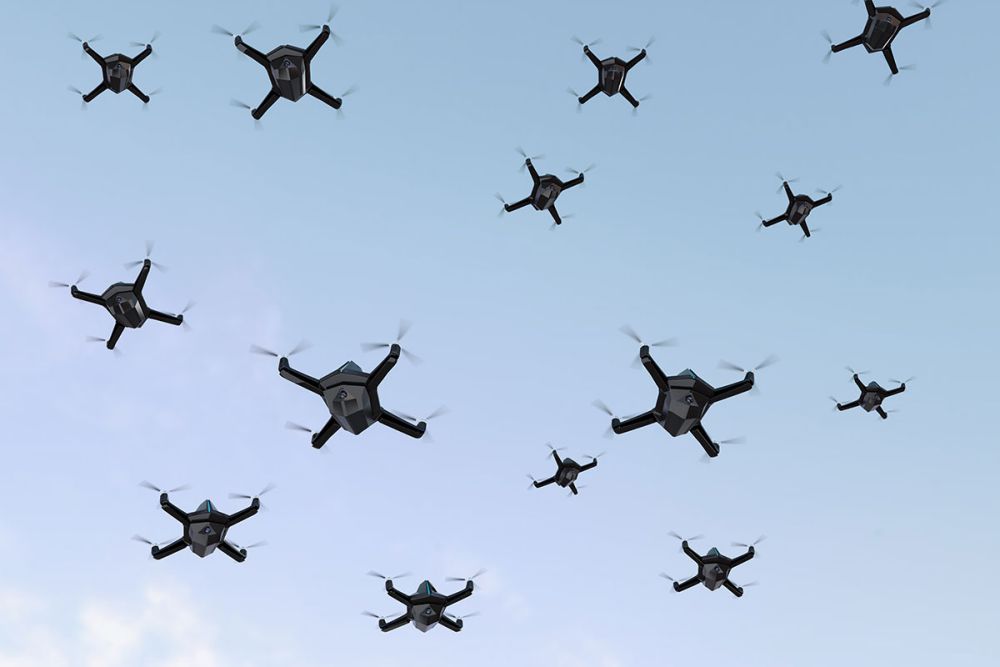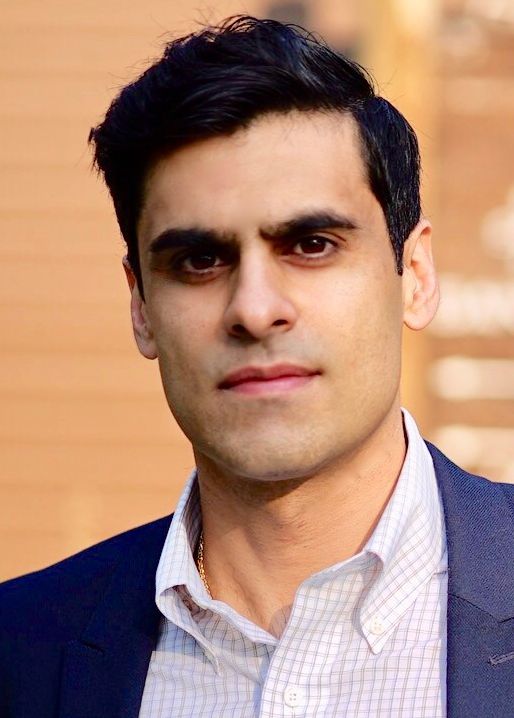
Future Shocks

Ready or not, the science fiction gadgetry of the future is here: unmanned and autonomous weapons systems with artificial intelligence, 3D-printed weapons, new cyber technologies for use in warfare, hypersonic delivery systems. In each case, the technology is being rapidly developed in the commercial sector. It’s a reality that haunts government officials around the world.
“The spread of advanced technologies may be the central security challenge of the 21st century,” said Neil Narang, a UC Santa Barbara assistant professor of political science.
Narang would know. The international relations scholar spent much of the last two years in Washington, D.C., working with the U.S. government on issues of national security, including as a senior advisor in the Office of the Secretary of Defense for Policy on a Council on Foreign Relations Fellowship. As part of the office’s strategy team, he worked on assessing risk across a range of global threats.
Now, with the help of a recently awarded $500,000 grant from the Carnegie Corp. of New York, he is jointly leading a new initiative to study the impact of emerging technologies on international security, in partnership with co-investigators from the University of Virginia and George Washington University.
Narang hopes that it will be the first of many such grants awarded at UCSB.
“I think that one of the things that makes UCSB such a great place to study the impact of emerging technology on society,” Narang explained, “is that UCSB continues to be the birthplace of important scientific and technological advances, many of them based on the award-winning work of the faculty in our science and engineering departments. I think that these innovations naturally go hand in hand with questions about how these technologies will impact society.”
Narang believes that understanding these impacts — particularly the consequences that emerging technologies have for international security — will require a multipronged approach that not only crosses academic departments, but also extends beyond academia to partnerships with industry and government.
To that end, Narang organized and hosted one of the most important conferences on the issue of emerging technologies and international security to date in December. The conference was held in the heart of Silicon Valley at Stanford University. “I chose the location because, in many ways, the government is trying to catch up with the pace of innovation coming out of places like Silicon Valley,” Narang explained. “I also spent a year on leave at Stanford, so it felt like a very natural and easy thing to hold it there, and to get people from different technology companies to show up to discuss these issues.”
At the conference, industry leaders from tech companies like Palantir, Palo Alto Networks and Qadium shared a room with current and former government officials, representatives from leading think tanks such as the Hoover Institute and Brookings Institution, and eminent scholars of international security from top academic institutions across the U.S. and abroad, including the University of California, Stanford, MIT, the University of Pennsylvania, Cornell and others. William Perry, Secretary of Defense in the Clinton administration, and Raj Shah, managing partner of the Defense Innovation Unit Experimental, delivered keynote speeches.
“The conference was an amazing success,” Narang said. “Participants presented groundbreaking research about how emerging technologies — broadly defined to include cyber, satellite and space technology, additive manufacturing, autonomy, AI — could radically reshape the future of international security.”
Of course, emerging technologies — everything from English long bows, rifles, tanks and radar — have always changed the nature of conflict. But what’s different about today’s advancements, Narang noted, is that they’re overwhelmingly being developed by the commercial sector in a decentralized way that is much harder to monitor, leading to a greater risk of diffusion. The private sector has always produced weapons technologies, but they were generally funded and largely controlled by governments and their acquisitions processes. Those days may be over.
As Bob Work, a deputy secretary of defense in the Obama administration, said in a speech in Belgium in 2016, “… almost all of the technology that is of importance in the future is coming from the commercial sector, and all of the technology base is global. So that means any competitor and any adversary is going to have access to these types of technologies, and they can quickly mimic even the most powerful state.”
“One of the challenges that people in the Pentagon actually think about is, ‘How do we monitor and regulate the diffusion of these technologies while also not slowing down advancements in these technologies?’ ” Narang said.
That’s a tricky business, he explained, because the tech sector often worries that its technologies could be used inadvertently, co-opted or even hacked by the government. There’s a trust divide, but Narang hopes that universities can build bridges between them.
“In some ways we’re like neutral territory,” Narang said, “because we’re seen as a safe place to discuss ideas.”
Narang sees the collaboration on the Carnegie Corp. grant as validation of UCSB’s promise as a future hub for interdisciplinary research on emerging technologies and their impact on international security. “It’s shouldn’t be a hard sell,” he said. “I think there are a lot of funders that are interested precisely because of our success in the sciences and engineering.”



